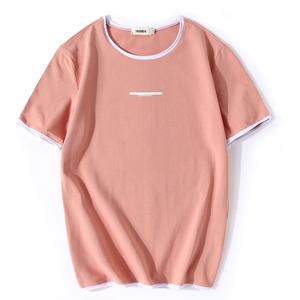Quickly identifying the anti-wrinkle properties of clothing fabrics requires an in-depth analysis of common clothing fabric properties. The following are the characteristics of some common clothing fabrics and their impact on wrinkle resistance:
1. Cotton: Cotton is a natural fiber with good breathability. and hygroscopicity. However, cotton wrinkles more easily because it has no stretch, memory, and insufficient structural support between fibers. Therefore, cotton usually needs to be fully ironed to make it flat again.
2. Burlap: Burlap is another natural fiber that excels in breathability and moisture absorption. However, linen is also prone to wrinkles because its fibers are rougher and not elastic enough. Styling and thorough ironing are common methods of removing wrinkles from linen.
3. Silk: Silk is a high-quality natural fiber with luster and soft feel. Silk fabric wrinkles easily because its fibers are longer and not elastic enough. Ironing is a common method for restoring the smoothness of silk garments.
4. Polyester (polyester fiber): Polyester is a synthetic fiber with good anti-wrinkle properties. Its fibers have high elasticity and memory and can quickly return to their original shape. Because polyester doesn’t wrinkle easily, polyester fabrics usually don’t require much ironing and attention, and are easy to keep flat.
5. Nylon: Nylon is a synthetic fiber that usually has good wrinkle resistance. Its fibers are soft and have a certain degree of elasticity, and can effectively restore smoothness. Nylon fabrics require a little ironing or hanging to stay flat.
6. Elastic fabric (elastic fiber): Elastic fabric, such as elastic cotton, elastic silk, etc., has good elasticity and resilience. This kind of fabric is generally less likely to wrinkle significantly and can quickly return to its original shape. Typically, stretch fabrics stay flat without much ironing.
In addition to the properties of the fabric, there are some other factors that may affect the anti-wrinkle performance of clothing fabrics, such as clothing cutting design, fiber processing technology, and wearing and Maintenance methods, etc.
It should be noted that correct washing and maintenance habits are crucial to maintaining the wrinkle-resistant properties of clothing fabrics. Follow the cleaning and ironing instructions on the fabric label, choose the correct detergent, and use the appropriate ironing temperature to keep your clothing fabrics neat and flat. If you are really bothered by the anti-wrinkle problem, you can also consider choosing fabrics with anti-wrinkle treatment when purchasing clothes, or use professional ironing services to solve the wrinkle problem.








